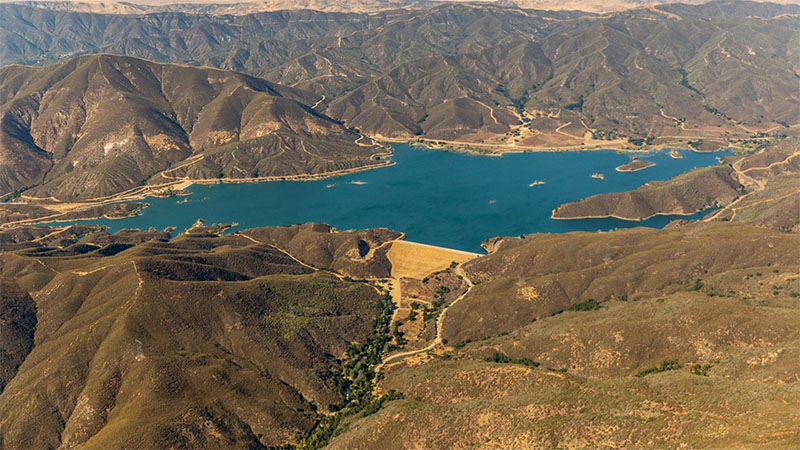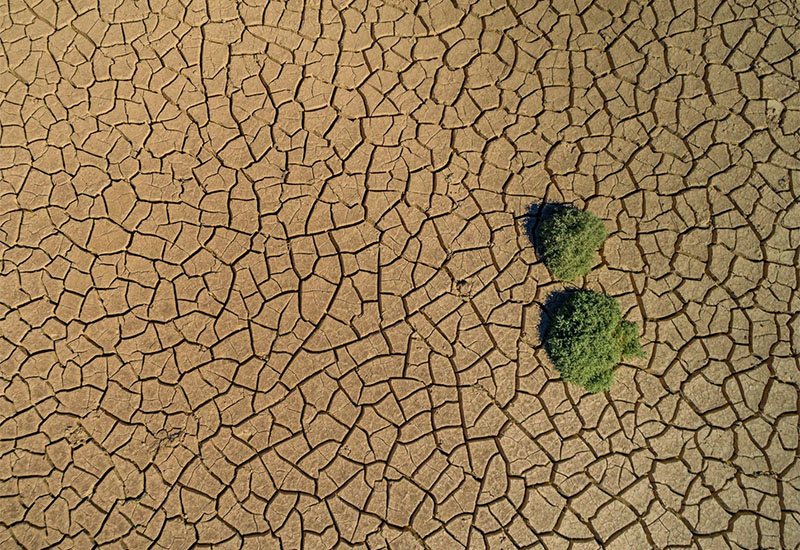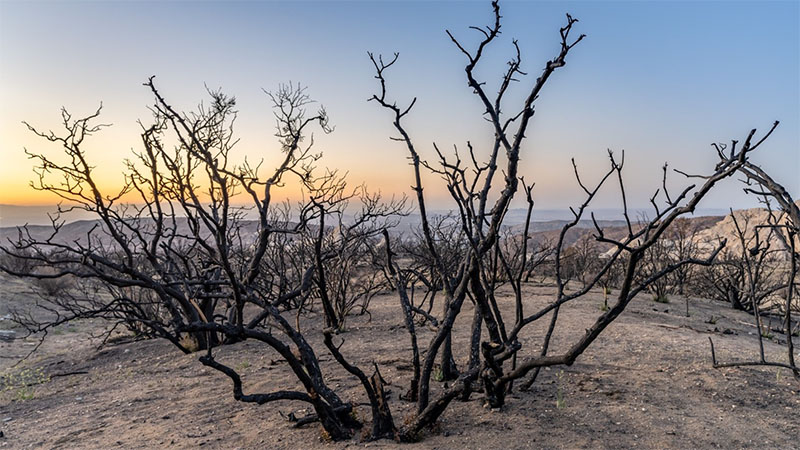Drought can be defined from different perspectives. Most people think of meteorological drought, which is broadly defined as a deficit in precipitation over a long period of time (from months to years). However, there is also anthropogenic drought where human activities rather than natural factors cause or intensify droughts and their impacts. A recent article published in Reviews of Geophysics focuses on anthropogenic drought, exploring how it can be defined and incorporated into models. Here, the lead author explains the concept of anthropogenic drought and suggest how scientists can contribute to drought analysis, planning and mitigation in the future.
How is drought usually classified and measured?
A product-focused approach is usually used, which quantifies, predicts, and projects deficit in water-related variables or water-dependent activities (such as precipitation, soil moisture, and groundwater) due to climatic variability. For example, Standardized Precipitation Index (SPI) is a popular measure of meteorological drought that defines drought based on deviation of precipitation from the long-term mean. This indicator explains the water availability from a meteorological perspective but does not offer any insights on the processes behind below-average precipitation levels.
What are some of the weaknesses with drought indicators?
Most drought indicators do not consider two-way interactions between humans and the environment.
Most drought indicators do not consider two-way interactions between humans and the environment, specifically how human activities can change precipitation, increase water stress risk, or alter micro-climate conditions; likewise they don’t consider the impact of local water demand or land management practices. For example, California’s Central Valley is artificially irrigated over a very wide geographic area, which can change precipitation patterns and soil moisture levels. Additionally, current drought indicators that consider drought as a product do not account for water stress impacts on the environment, particularly beyond where and when a particular drought occurs.
Why is it more effective to define drought as a process instead of a product?
We believe that understanding drought as a multi-dimensional, multi-scale phenomenon characterized by compounding processes that involves feedbacks between human and nature, provides new insights that will be useful for planning and management of water resource systems.

Can you give one example of an anthropogenic drought that occurred somewhere in the world and its impacts?
In many parts of the world, such as southern California, local water demand has increased beyond what the natural environment can provide. Even during a wet climate condition (i.e., above average precipitation) alternative and non-local sources of water may be necessary to meet demand. This indicates that water shortage has a strong human component.
Lake Urmia, in northwest Iran, is another interesting example. There are many wetlands and lakes around the world that have been significantly affected by continuously increasing water withdrawals and the resulting anthropogenic drought. Lake Urmia was once a healthy saltwater lake with a vibrant ecosystem. In the past two decades, the lake has shrunk significantly mainly due to diversion of freshwater for irrigation and farming. This is a classic case of anthropogenic drought and human-induced changes to water demand and land use leading to substantial environmental degradation.
How might the frequency, severity, and impacts of anthropogenic drought evolve as the global climate continues to change?
Anthropogenic droughts may intensify in the future because of the compounding effects of climate change and human activities. Due to feedbacks and interactions between droughts and high temperatures, the negative impacts of hot drought events will become more devastating as temperatures continue to rise.
Anthropogenic droughts may intensify in the future because of the compounding effects of climate change and human activities.
These multivariate climate conditions can subsequently impact anthropogenic water demand and water use, as shown in the 2018 European drought and heatwave. This is predicted to result in increases in demand from the agricultural sector for crop water.
In addition, the frequency and distribution of hot droughts can affect renewable energy generation and current and future energy portfolios which, in turn, can increase the energy sector’s anthropogenic CO2 footprint and subsequently influence precipitation conditions and anthropogenic drought severity.
Moreover, hot droughts can modify the phenology of plants and change the length of the growing season, local hydrology and the carbon uptake period.

Is it possible to predict anthropogenic drought in the future?
Any kind of drought prediction is very challenging but anthropogenic drought prediction is even more challenging because different countries and regions in the world are developing at different rates and have different evolving needs and demands for water. However, some progress is being made in modeling.
Water-human system dynamics models as well as Integrated Assessment Models (IAMs) for future scenario analysis provide one opportunity for combining development pathways with future climate projections. These models can be used to explore different plausible policy actions and evaluate their outcomes, though there are significant uncertainties and assumptions related to scenarios that can potentially affect the outcomes.
However, the currently available models are more suitable for large scale events that occur over a long period of time and therefore do not allow for the investigation of effects of short-term and regional shocks (such as individual, local droughts). We envision, nonetheless, that rapid developments in this area will offer exciting opportunities for future research.
How can scientists help with environmental policy and planning for future anthropogenic drought?
Scientists from the mainstream hydrology and meteorology communities, together with social and political scientists, can play an important role.
Over the coming decades, we will be in a warmer and more populated world with more climatic extremes. Droughts will be coupled with socio-political tensions. Scientists from the mainstream hydrology and meteorology communities, together with social and political scientists, can play an important role. They can advise on how model results can be used to develop policy and management strategies to potentially reduce the impacts of anthropogenic droughts. They can work with policy makers and stakeholders to explore different water supply and demand management solutions.
What are some of the unresolved questions where further research, data gathering, or modeling is needed?
The physical impacts of hot drought, flash drought and snow drought on natural and built environments are not easy to quantify, but researchers must close the gap between large-scale climatic studies (concerning drought mechanisms, large-scale climate feedbacks) and local-scale responses and policies (such as surface and groundwater management and use, in response to local physical conditions).
We must strengthen our practical understanding of human activities and their feedbacks on different types of droughts and their physical drivers. This if fundamental to improving community response to future droughts. We need more studies that explore and characterize the interaction of extreme droughts with local human water demand and environmental water needs.

—Amir AghaKouchak ([email protected], @aghakouchak, ![]() 0000-0003-4689-8357), University of California, Irvine, USA
0000-0003-4689-8357), University of California, Irvine, USA
Citation:
AghaKouchak, A. (2021), How anthropogenic drought plays out, Eos, 102, https://doi.org/10.1029/2021EO158794. Published on 26 May 2021.
Text © 2021. The authors. CC BY-NC-ND 3.0
Except where otherwise noted, images are subject to copyright. Any reuse without express permission from the copyright owner is prohibited.

